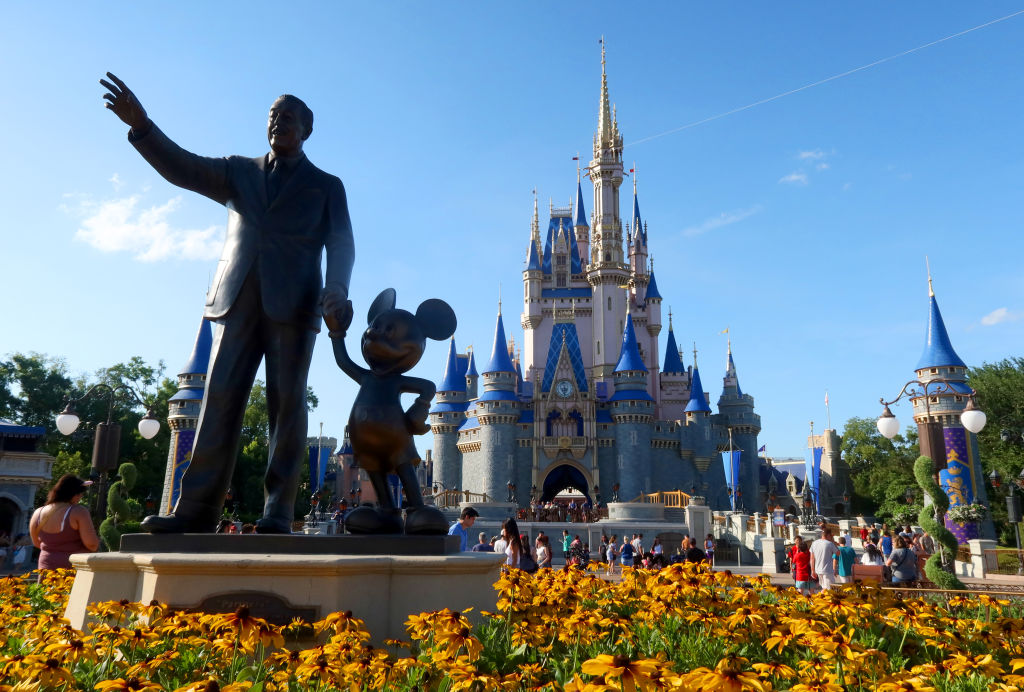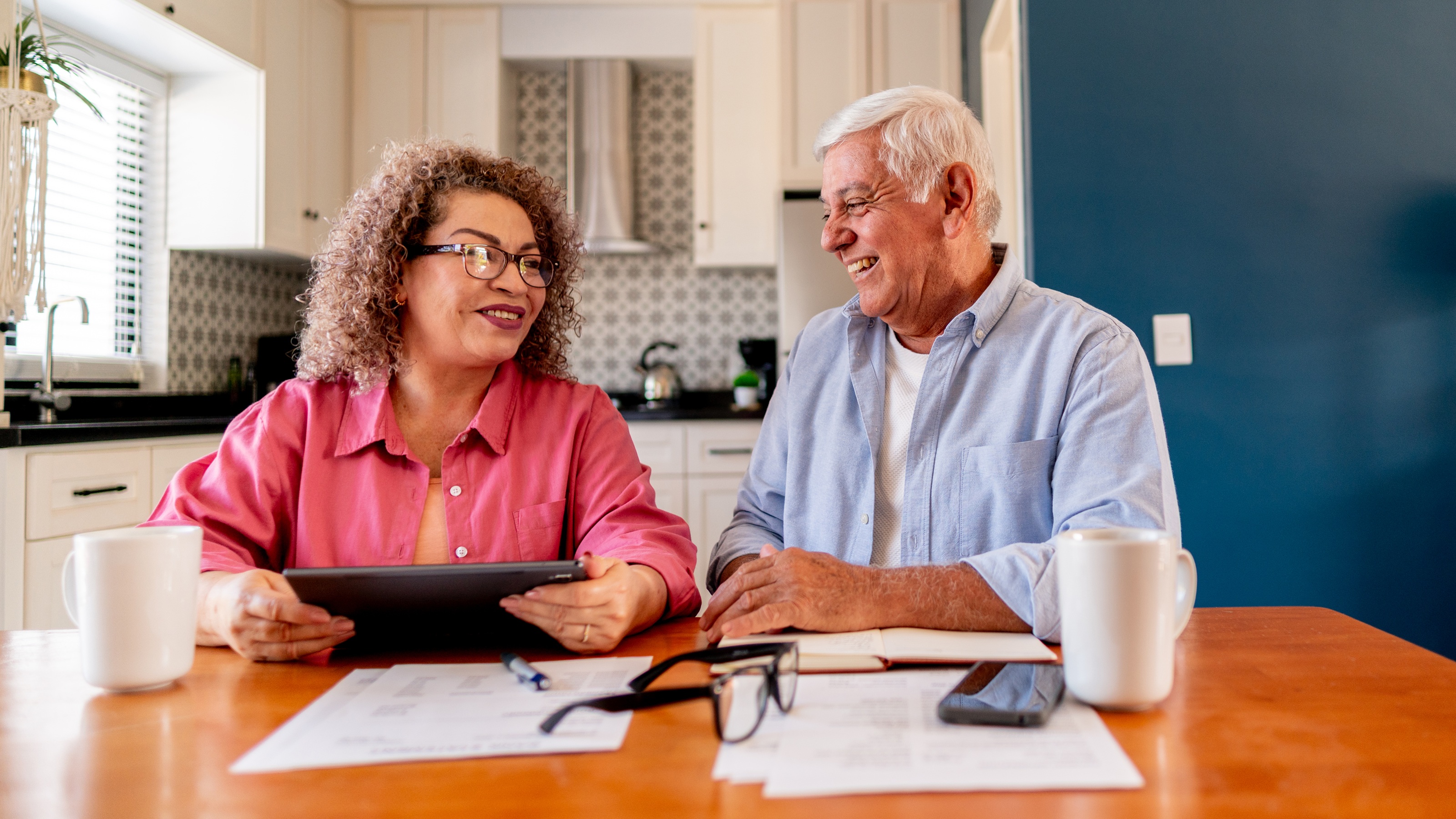Get More Income By Investing in Preferred Stocks
They stand to pay higher dividends and protect you in a rising-rate environment, but can be complex investments.

With interest rates having been so low for so long, you might be wondering the same thing a number of clients have asked me: Where can I find additional income or dividends?
Preferred stock can be a great asset class to complement the right portfolio, but it can also be confusing to newcomers. These shares don't act quite like stocks or bonds, and have their own unique risks and benefits.
Here's what you need to know about them and how to incorporate preferred stock into your portfolio:
From just $107.88 $24.99 for Kiplinger Personal Finance
Become a smarter, better informed investor. Subscribe from just $107.88 $24.99, plus get up to 4 Special Issues

Sign up for Kiplinger’s Free Newsletters
Profit and prosper with the best of expert advice on investing, taxes, retirement, personal finance and more - straight to your e-mail.
Profit and prosper with the best of expert advice - straight to your e-mail.
(Before we get going, I have to remind you that every situation is different and that preferred stock isn't necessarily suited to every investor. If you're not sure about whether you should add preferreds to your portfolio, please feel free to reach out to me or seek out another experienced adviser.)
What They Are
Preferred stock occupies a special place in a company's capital structure, sitting in between debt and equity and offering some features of both. These shares are equities that can gain value if the company does well. Unfortunately, holders of preferred shares do not get voting rights, like they would owning other classes of equity.
The scheduled payments that preferred shares make to shareholders are also unique. Though they're usually structured as qualified dividends, the amount that preferreds pay is predetermined, unlike common stock dividends. This makes preferred stock look a lot like a bond, except that it's more common to receive dividend income than interest income on a preferred share. This can offer shareholders preferential tax treatment.
Who They're For
Preferreds are often appealing to income investors and are potentially more beneficial for those in higher tax brackets.
Because the majority of preferred dividends are "qualified," your preferred stock dividends will trigger a lower tax bill than you would pay on the same income from a taxable bond. Better tax treatment is especially attractive in a low-rate environment. (Again, every situation is unique, so please consult your accountant before making any tax-related decisions.)
Where They Fit in Your Portfolio
This special asset class does get higher priority than common stock, meaning that holders of preferred shares would get paid their dividends before holders of common shares. But preferred stock isn't as safe as your typical corporate bond—especially because some firms issue preferred stock precisely because they aren't able to get cheaper financing through bond issues. That means they are safer than common stock, but riskier than most bonds. It's important to do thorough diligence on any preferred stock to quantify and mitigate the risks.
Because they aren't perfectly correlated with either stocks or bonds, preferred shares can add a nice diversification benefit for your portfolio. But that doesn't mean you should go wild: In my experience, you want to limit your exposure to 5% to 10% of your portfolio value.
Also, keep in mind that financial companies are strongly represented in the asset class. In fact, about 80% of companies that issue preferred stock are financial institutions. It's a good idea to review your overall portfolio allocation to make sure that your preferred allocation doesn't produce too much exposure to the sector with respect to your risk profile and financial goals.
How They Help Prepare for Rising Rates
While it might sometimes seem like interest rates are never going to rise again, I think it's fair to say that nothing lasts forever in finance—not even low interest rates.
The good news is, historically speaking, preferred stock tends to do well when interest rates rise. Some even have floating-rate or adjustable coupon structures that keep payments in line with interest rates over time.
If the positive relationship between rising rates and preferreds holds in the future, shareholders could gain. Of course, it's impossible to know when rates might rise again or what the effects will be, so I caution my clients not to place big bets on it. Just keep it in mind as a potential long-term plus to holding preferred shares.
Why You Need a Professional
It can be tempting to research and buy preferred stock on your own, but because of the complexity and risk factors, I usually advise against it. Preferreds just aren't as easy to analyze as common stock—with their unique structure, as well as the influence that regulatory, credit and interest rate risks have on the asset class.
In fact, while I typically prefer Separately Managed Accounts (SMAs) for my clients, when it comes to preferred stock, I think mutual funds are usually the best choice. Typically, preferred stock is offered at either $25 par value or $1,000 par value. In my opinion it's important to have both in your portfolio to reduce volatility, potentially improve your overall performance, and increase diversification. Mutual funds have the liquidity and buying power to move large blocks of either one. On the other hand, with an SMA your manager might favor the retail-investor oriented $25 par value preferred stock. In that situation, you lose flexibility and could potentially hinder your performance. Going with a mutual fund gives you more access and a better chance at making the most of the strategy. I have a shortlist of mutual funds that I favor, and I'd advise you to also do your research when picking a mutual fund.
Overall, preferred stock can be a great addition to your portfolio, provided it suits your overall portfolio allocation, risk tolerance and time horizon. But there are so many factors involved that affect the value and stability of a given preferred stock, not to mention an entire portfolio. I definitely recommend speaking to an adviser to make sure your allocation is suitable for you and to help you find an appropriate professional to manage the strategy.
Bradford Pine is a wealth adviser and president of the Garden City, NY-based Bradford Pine Wealth Group. He assists individuals to create wealth, simplify their lives and plan for retirement.
Anna B. Wroblewska contributed to this article.
Profit and prosper with the best of Kiplinger's advice on investing, taxes, retirement, personal finance and much more. Delivered daily. Enter your email in the box and click Sign Me Up.

Brad Pine is a wealth adviser and president of Bradford Pine Wealth Group, based in Garden City, N.Y. BP Wealth Group assists individuals and entrepreneurs to create wealth, simplify their lives and plan for retirement. Honesty, integrity and reliability are the foundations of Pine's investment philosophy.
-
 Nasdaq Leads as Tech Stages Late-Week Comeback: Stock Market Today
Nasdaq Leads as Tech Stages Late-Week Comeback: Stock Market TodayOracle stock boosted the tech sector on Friday after the company became co-owner of TikTok's U.S. operations.
-
 Disney’s Risky Acceptance of AI Videos
Disney’s Risky Acceptance of AI VideosThe Kiplinger Letter Disney will let fans run wild with AI-generated videos of its top characters. The move highlights the uneasy partnership between AI companies and Hollywood.
-
 Ask the Editor: Itemized Deductions
Ask the Editor: Itemized DeductionsAsk the Editor In this week's Ask the Editor Q&A, Joy Taylor answers questions on itemized deductions claimed on Schedule A of Form 1040
-
 Are You Putting Yourself Last? The Cost Could Be Your Retirement Security
Are You Putting Yourself Last? The Cost Could Be Your Retirement SecurityIf you're part of the sandwich generation, it's critical that you don't let the needs of your aging parents come at the expense of your future.
-
 I'm an Insurance Pro: It's Time to Prepare for Natural Disasters Like They Could Happen to You
I'm an Insurance Pro: It's Time to Prepare for Natural Disasters Like They Could Happen to YouYou can no longer have the mindset that "that won't happen here." Because it absolutely could. As we head into 2026, consider making a disaster plan.
-
 The Future of Philanthropy Is Female: How Women Will Lead a New Era in Charitable Giving
The Future of Philanthropy Is Female: How Women Will Lead a New Era in Charitable GivingWomen will soon be in charge of trillions in charitable capital, through divorce, inheritance and their own investments. Here's how to use your share for good.
-
 5 Smart Things to Do With Your Year-End Bonus, From a Financial Professional
5 Smart Things to Do With Your Year-End Bonus, From a Financial ProfessionalAfter you indulge your urge to splurge on a treat, consider doing adult things with the extra cash, like paying down debt, but also setting up a "fun fund."
-
 Are You a Gen X Investor? Here's How You Can Protect Your Portfolio From an AI Bubble
Are You a Gen X Investor? Here's How You Can Protect Your Portfolio From an AI BubbleAmid talk of an AI bubble, what's the best course of action for investors in their 50s and 60s, whose retirement savings are at risk from major market declines?
-
 Hey, Retirees: Put Your Charitable Gifts in a Donor-Advised Fund (and Enjoy Your Tax Break)
Hey, Retirees: Put Your Charitable Gifts in a Donor-Advised Fund (and Enjoy Your Tax Break)A donor-advised fund is a simple (really!), tax-smart strategy that lets you contribute a large, tax-deductible gift now and then distribute grants over time.
-
 If You're a U.S. Retiree Living in Portugal, Your Tax Plan Needs a Post-NHR Strategy ASAP
If You're a U.S. Retiree Living in Portugal, Your Tax Plan Needs a Post-NHR Strategy ASAPWhen your 10-year Non-Habitual Resident tax break ends, you could see your tax rate soar. Take steps to plan for this change well before the NHR window closes.
-
 Your Year-End Tax and Estate Planning Review Just Got Urgent
Your Year-End Tax and Estate Planning Review Just Got UrgentChanging tax rules and falling interest rates mean financial planning is more important than ever as 2025 ends. There's still time to make these five key moves.